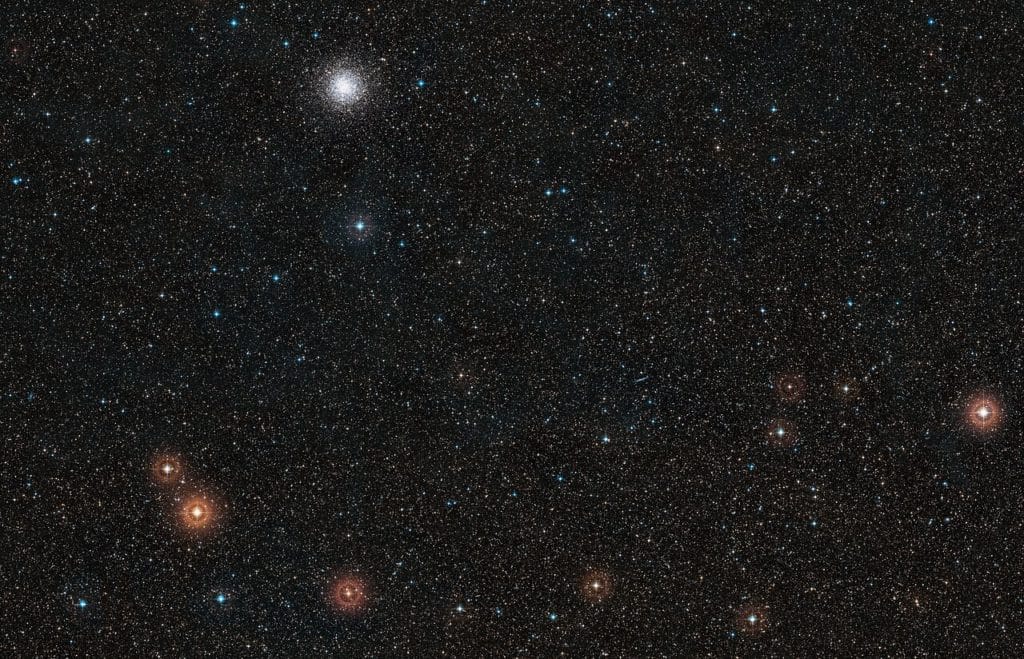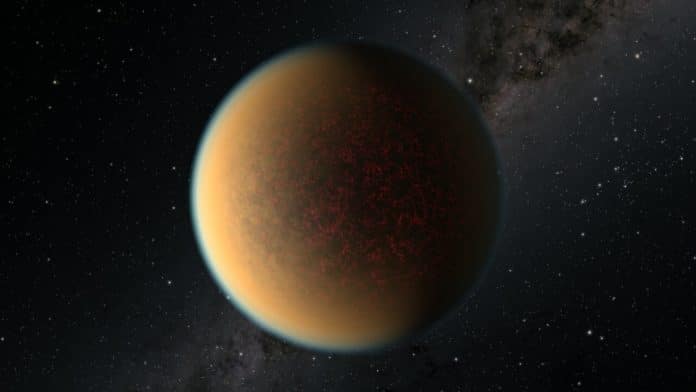Planet GJ 1132 b is a rocky exoplanet that orbits around a red dwarf star about 41 light-years away. It is believed that it had a gaseous atmosphere during the origin of the planet that it drastically lost after some time. In a short period of time, it was reduced to a bare core about the size of Earth.
The planet GJ 1132 b has a similar size and density to Earth. The Earth might have had such a hazy appearance early in its history, although the new planet is far too hot to be habitable, unlike Earth.
Recent observations by NASA/ESA Hubble Space Telescope revealed that the exoplanet is developing a new atmosphere because of volcanic activity. The atmosphere is rich in hydrogen, hydrogen cyanide, methane, and ammonia and has a hydrocarbon haze.
The previous atmosphere of the planet was enriched with hydrogen, hydrogen cyanide, methane and ammonia, and hydrocarbon haze. But gradually, it lost its hydrogen and helium atmosphere due to intense radiation from its hot, young star. The hydrogen was absorbed into the planet’s molten magma mantle.
In new observations, Hubble observed that the planet’s volcanic activity is releasing hydrogen to form a new atmosphere. This second atmosphere, which continues to leak away into space, is continually being replenished from the reservoir of hydrogen in the mantle’s magma.
Team member Paul Rimmer of the University of Cambridge, UK, said, “This second atmosphere comes from the surface and interior of the planet, and so it is a window onto the geology of another world. A lot more work needs to be done to properly look through it, but the discovery of this window is of great importance.”
Team member Raissa Estrela of the Jet Propulsion Laboratory at the California Institute of Technology in Pasadena, California, USA, said, “We first thought that these highly radiated planets would be pretty boring because we believed that they lost their atmospheres. we looked at existing observations of this planet with Hubble and realized that there is an atmosphere there.”
Team leader Mark Swain of the Jet Propulsion Laboratory said, “How many terrestrial planets don’t begin as terrestrials? Some may start as sub-Neptunes, and they become terrestrials through a mechanism whereby light evaporates the primordial atmosphere. This process works early in a planet’s life, when the star is hotter. Then the star cools down and the planet’s just sitting there. So you’ve got this mechanism that can cook off the atmosphere in the first 100 million years, and then things settle down. And if you can regenerate the atmosphere, maybe you can keep it.”

According to astronomers, the crust of GJ 1132 b is extremely thin, perhaps only hundreds of feet thick. That’s much too feeble to support anything resembling volcanic mountains. Its flat terrain may also be cracked like an eggshell by tidal flexing. Hydrogen and other gases could be released through such cracks.
Swain said, “This atmosphere, if it’s thin — meaning if it has a surface pressure similar to Earth — probably means you can see right down to the ground at infrared wavelengths. That means that if astronomers use the James Webb Space Telescope to observe this planet, there’s a possibility that they will see not the spectrum of the atmosphere, but rather the spectrum of the surface. And if there are magma pools or volcanism going on, those areas will be hotter. That will generate more emission, and so they’ll potentially be looking at the actual geological activity — which is exciting!”
Rimmer said, “This result is significant because it gives exoplanet scientists a way to figure out something about a planet’s geology from its atmosphere. It is also important for understanding where the rocky planets in our own Solar System — Mercury, Venus, Earth and Mars, fit into the bigger picture of comparative planetology, in terms of the availability of hydrogen versus oxygen in the atmosphere.”
Research Paper
- Mark R. Swain, Detection of an Atmosphere on a Rocky Exoplanet. arXiv:2103.05657 [astro-ph.EP]
